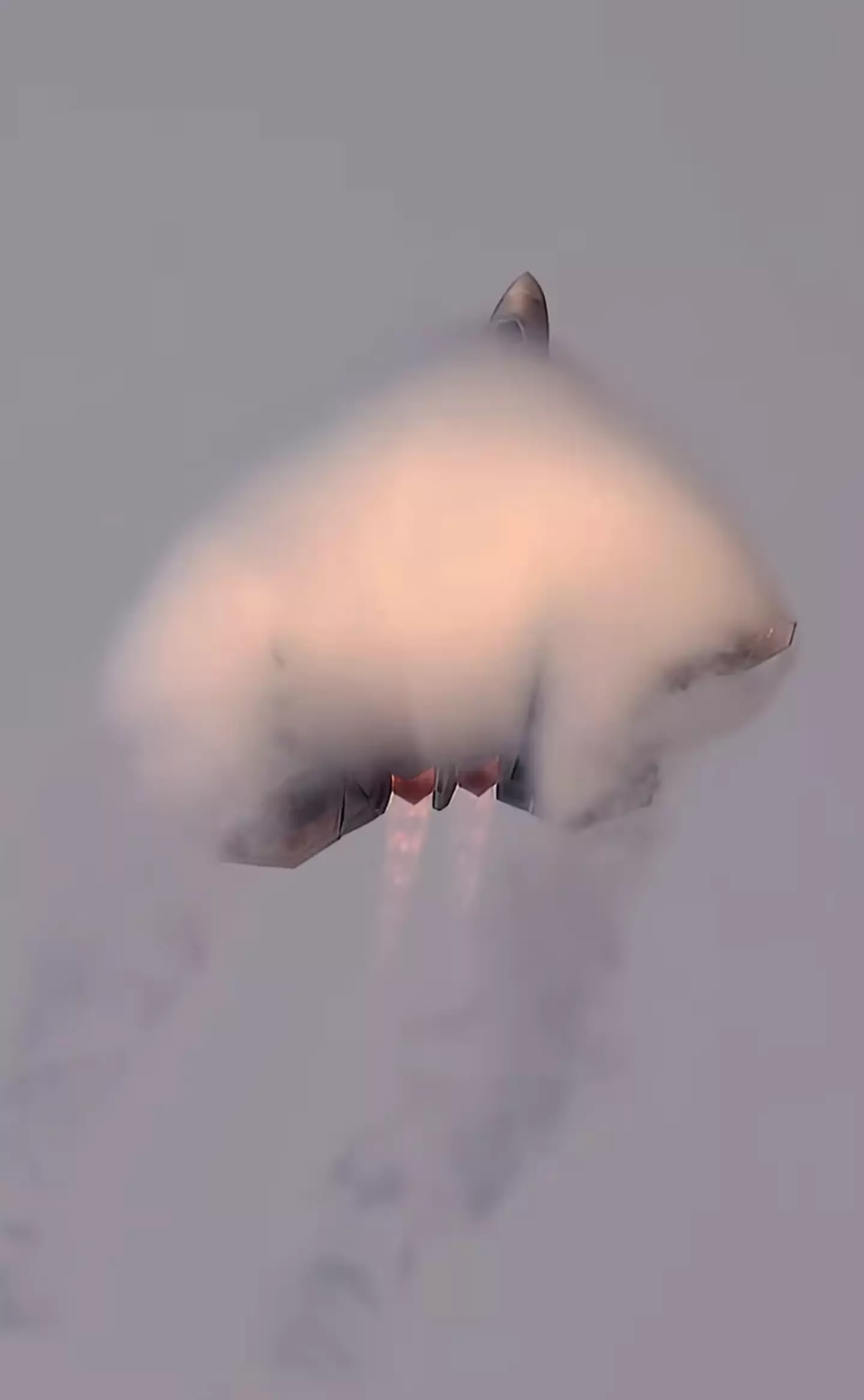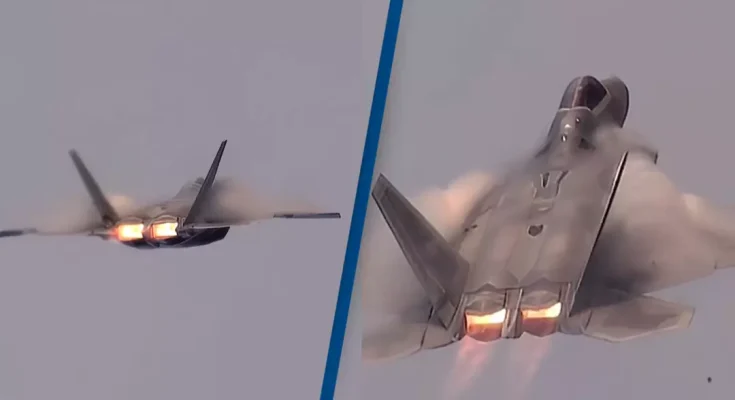The incredible video has captivated viewers online
Footage of a fighter jet seemingly ‘activating its cloaking device’ looks like something straight out of an action movie – but it’s actually entirely real.
Step aside, Top Gun, there’s a new – or old, depending on how you look at it – fighter jet that’s got our attention, and it comes in the form of the F-22 Raptor – known in full as the Lockheed Martin F-22 Raptor.
Footage shared online by photographer and videographer Mark Fingar shows the moment an F-22 nears to breaking the sound barrier, at which point it is enveloped in what people have described as its ‘cloaking device’.
The F-22 was once arguably one of the most advanced fighter jets ever created when it was developed for the United States Air Force.
It first took flight in 1997 in Georgia, US after six years of development, but in 2021 a former Air Force chief of staff expressed belief the F-22 would be fully retired by the end of the decade.
However, the agency has since decided to upgrade the jets, likely giving them a life into the 2030s.
The jets can hit speeds of 1,500 mph – 2.2 times the speed of sound – and burn around 5,000 pounds of fuel every hour. However, despite what it might look like, the jet doesn’t come equipped with a ‘cloaking device’.
Instead, the plane creates what’s known as a vapor cone in the moments before it breaks the sound barrier, and some people have – fairly accurately – compared this online to a ‘cloaking device’.

People have been left in awe at the amazing video. (Mark Fingar/Instagram)
In Fingar’s video, one of the planes can be seen being engulfed by a vapor cone, making it difficult to see to the naked eye.
The clip left social-media users floored when it was shared online, with one person posting the video on Twitter and writing: “Mark Fingar captured an F-22 Raptor activating its cloaking device.”
Meanwhile, someone else compared it to something out of a Harry Potter movie.
“It’s how they play peekaboo in the clouds,” joked another.
Vapor cones occur because of condensed water that can sometimes form around an object moving at high speed through moist air.

An F-22 Raptor can hit speeds of 1,500mph. (Chris Jung/NurPhoto via Getty Images)
When localized air pressure around an object like an F-22 Raptor drops, so does the temperature. Then, if the temperature drops below saturation temperature (the temperature for a corresponding saturation pressure at which a liquid boils into its vapor phase), a cloud will form.
The change in temperature can also cause a shockwave.
Rod Irvine, the chairman of the Royal Aeronautical Society’s aerodynamics group, explained to the BBC: “If you see a vapor cone, you’ve got a shockwave, because you’ve got a change in pressure and temperature.”
Irvine added: “The aircraft isn’t necessarily travelling faster than the speed of sound, but the air travelling over the wing is accelerated and locally breaks the sound barrier.”
The science is interesting, but the main thing is that it just looks cool.



